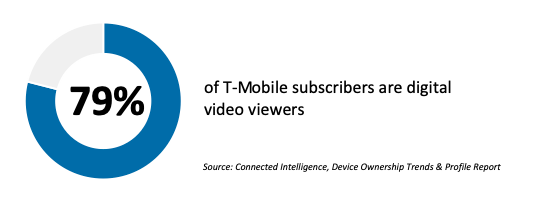
Quibi launches
The mobile-only video service, Quibi, launches today into an environment that is completely counter to its core value proposition. The service was intended to fill idle time on the go with short video bites. With the majority of the country stuck at home, those moments no longer exist. That said, Quibi is launching with a critical carrier partnership as T-Mobile is providing Quibi “on us” for a year. This, compounded with the company’s 90-day free trial, might give it enough juice to weather the stay at home storm.
The NPD Take:
- The timing is bad. Not only is the current environment counter to the service’s core value proposition, the competition is fierce at a time where economic uncertainty is a stark reality. While consumers are streaming more video they are also cutting discretionary expenses. Compound that with the pending launches of HBO Max and Peacock and you have a perfect storm.
- The T-Mobile carrier partnership is stellar. T-Mobile attracts a younger, mobile first, video centric customer base. The audience match and 1-year “on-us” runway is exactly what Quibi needs to develop an audience.
Walled gardens are breaking down
Hardware and content distributors have maintained wall gardens, keeping their services tied to their hardware. These ecosystems have been seen as critical to keeping consumers within one’s marketplace and offered benefits of a uniformed user interface and billing relationship. Over the past year these wall gardens have been crumbling. The latest to come down is between Amazon and Apple. Amazon’s Prime Video iOS and Apple TV apps now let you make in-app purchases, including renting and buying movies and TV shows. Content distributors are now seeing greater value in ubiquitous availability, prompting them to pay competitor hardware OEMs a cut for transactions on their platforms.
The NPD Take:
- It’s about time. Breaking down these barriers provides consumers with greater access and less confusion around what they can do and where they can do it. Ultimately this is a transition that benefits the consumer.
- Services revenue is becoming so critical that content distributors are now willing to play with the preverbal enemy. Expect more of this to come as content will continue to reign king in the 2020s.
AT&T and Comcast report heightened viewing
Media companies are starting to report video stats as bright spots in a what has become a dire time. Comcast has shed some light on performance, talking about video-on-demand saying that it is nearing “record highs,” up 25% year over year. Last week AT&T reported movie buying and renting volume has almost doubled during weekdays and on weekends. But both companies are also reporting an increase in free video consumption. Comcast reported a nearly 50% increase in voice remote requests for “free movies.” And last week AT&T said free video on-demand is up nearly 25% across both AT&T TV and DIRECTV.
The NPD Take:
- While viewers are stuck home they are watching more video programming. At this early juncture it’s having a positive impact on on-demand movie revenues. There is risk that this could be short lived as more consumers find themselves with less disposable income.
- The up-tick in searches for free video may be yet another indicator that viewers are transitioning back to ad-supported video options. This trend is likely to be bolstered by the challenging economic times ahead.